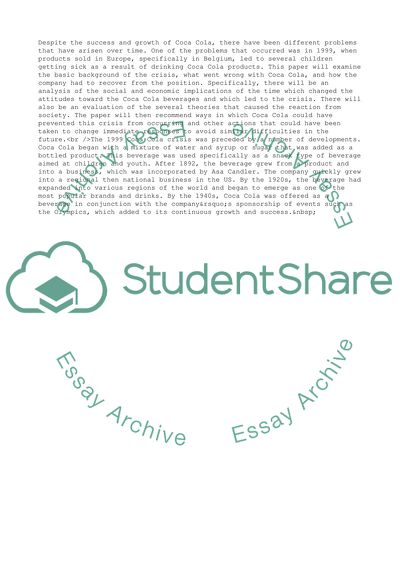Cite this document
(The 1999 Coca Cola Crisis Essay Example | Topics and Well Written Essays - 1750 words, n.d.)
The 1999 Coca Cola Crisis Essay Example | Topics and Well Written Essays - 1750 words. https://studentshare.org/business/1567901-coca-cola-crisis-case-in-1999
The 1999 Coca Cola Crisis Essay Example | Topics and Well Written Essays - 1750 words. https://studentshare.org/business/1567901-coca-cola-crisis-case-in-1999
(The 1999 Coca Cola Crisis Essay Example | Topics and Well Written Essays - 1750 Words)
The 1999 Coca Cola Crisis Essay Example | Topics and Well Written Essays - 1750 Words. https://studentshare.org/business/1567901-coca-cola-crisis-case-in-1999.
The 1999 Coca Cola Crisis Essay Example | Topics and Well Written Essays - 1750 Words. https://studentshare.org/business/1567901-coca-cola-crisis-case-in-1999.
“The 1999 Coca Cola Crisis Essay Example | Topics and Well Written Essays - 1750 Words”. https://studentshare.org/business/1567901-coca-cola-crisis-case-in-1999.


